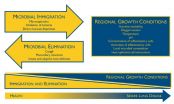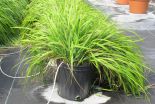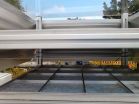Plant growth requires teamwork between 2 hormones
Molecular mechanism of plant growth explained
2015-08-17
(Press-News.org) This news release is available in German.
Two growth-promoting groups of substances, or phytohormones, the gibberellins and the brassinosteroids, are used independently of each other for the breeding and production of crop plants. A team of scientists at Technical University of Munich (TUM) has now discovered that the two act in concert - without brassinosteroids, a plant is unable to produce gibberellins.
For their current investigations, a research group at the Technical University of Munich, supported by scientists from the Helmholtz Zentrum Munich and the TU Braunschweig and headed by Professor Brigitte Poppenberger from the TUM used thale cress (Arabidopsis thaliana), a model research plant. The researchers wanted to examine the molecular mechanisms of brassinosteroids. Although it was well known how brassinosteroids are produced and how their signals are transmitted in plants, it was unclear how the growth promotion process is initiated.
What happens if the plant steroid is damaged?
The scientists used plants with mutations, which impaired the activity of brassinosteroids. They thereby discovered that these plants produced less gibberellin. As a result, the plants' germination was impaired, their growth inhibited and their flowering delayed. "The brassinosteroids are therefore necessary for the production of gibberellins - a mechanism that is highly relevant to the growth and development of plants," says Poppenberger, Professor for the Biotechnology of Horticultural Crops. The scientists were able to show that transcription factors are responsible for this mechanism. Transcription factors are proteins that regulate gene expression. Once activated by brassinosteroids, they initiate the production of gibberellin. "We've elucidated a molecular mechanism that is fundamental to cell elongation and division in plants," the head of the research group concludes.
Dwarf cultivars, such as balcony varieties of vegetables like tomatoes and cucumbers, as well as grain varieties were specifically selected for impaired brassinosteroid metabolism, says Poppenberger. "We now understand that these defects interfere with the mechanism of action of gibberellins. In barley, for example, this results in shorter stalks with better stability and higher yields," Poppenberger explains.
These short cultivars are called semi-dwarf varieties. They were bred as early as the 1950s and 1960s when the primary aim was to improve yields. The Nobel Laureate Norman Borlaug, known as the father of the green revolution, bred short-stalked wheat and rice. Coupled with intensified farming methods, these new crop varieties increased yields fivefold, preventing famines in Mexico and later China.
Brassinosteroids - the key to plant growth
Whereas external application of gibberellins has been utilized in agriculture for several decades, for example, to produce larger fruits or to obtain seedless fruits like grapes or tangerines, brassinosteroids have not been used in this manner. It would be too expensive. However, in plant breeding varieties with defects in brassinosteroid activity have been selected for, barley being a prime example. "These findings are an important step toward improving our understanding of how plant steroids work - and harnessing their potential for the breeding and production of crop plants," says Brigitte Poppenberger.
INFORMATION:
Publication:
Unterholzner, S.J., Rozhon, W., Papacek, M., Ciomas, J., Lange, T., Kugler, K.G., Mayer, K.F., Sieberer, T. and Poppenberger, B. (2015). Brassinosteroids are master regulators of gibberellin biosynthesis in Arabidopsis.
DOI: 10.1105/tpc.15.00433
http://www.plantcell.org/cgi/doi/10.1105/tpc.15.00433
Contact:
Prof. Dr. Brigitte Poppenberger
Technische Universität München
Biotechnology of Horticultural Crops
Tel.: +49 8161 71-2401
brigitte.poppenberger@wzw.tum.de
http://www.bgk.wzw.tum.de/index.php?id=2&L=1
ELSE PRESS RELEASES FROM THIS DATE:
2015-08-17
ANN ARBOR, Mich. -- With every breath you take, microbes have a chance of making it into your lungs. But what happens when they get there? And why do dangerous lung infections like pneumonia happen in some people, but not others?
Researchers at the University of Michigan Medical School have started to answer these questions by studying the microbiome of the lungs - the community of microscopic organisms are in constant contact with our respiratory system.
By studying these bacterial communities, and how they change in illness, they hope to pave the way for new ways ...
2015-08-17
Troubling questions about multiracial congregations' potential to address racial inequality are raised by a new national study done by researchers at Baylor University, the University of Southern California and the University of Chicago.
The study -- "United by Faith? Race/Ethnicity, Congregational Diversity, and Explanations of Racial Inequality" -- is published in the journal Sociology of Religion.
"We find little evidence that multiracial congregations promote progressive racial views among attendees of any race or ethnicity," the researchers wrote. Views of minorities ...
2015-08-17
BOSTON, Aug. 17, 2015 --Native North Americans have long adorned themselves and their homes with fragrant sweetgrass (Hierochloe odorata), a native plant used in traditional medicine, to repel biting insects, and mosquitoes in particular. Now, researchers report that they have identified the compounds in sweetgrass that keep these bugs at bay.
The team will describe their approach in one of more than 9,000 presentations at the 250th National Meeting & Exposition of the American Chemical Society (ACS), the world's largest scientific society, taking place here through Thursday.
Mosquitoes ...
2015-08-17
BOSTON, Aug. 17, 2015 -- Hand-written letters and printed photos seem quaint in today's digital age. But there's one thing that traditional media have over hard drives: longevity. To address this modern shortcoming, scientists are turning to DNA to save unprecedented amounts of digital data for posterity. One team has demonstrated that DNA they encapsulated can preserve information for at least 2,000 years, and they're now working on a filing system to make it easier to navigate.
The researchers present their work today at the 250th National Meeting & Exposition of the ...
2015-08-17
BOSTON, Aug. 17, 2015 -- A blood clot is a dangerous health situation with the potential to trigger heart attacks, strokes and other medical emergencies. To treat a blood clot, doctors need to find its exact location. But current clinical techniques can only look at one part of the body at a time, slowing treatment and increasing the risk for complications. Now, researchers are reporting a method, tested in rats, that may someday allow health care providers to quickly scan the entire body for a blood clot.
The team will describe their approach in one of more than 9,000 ...
2015-08-17
BOSTON, Aug.17, 2015 -- In a first-of-its-kind study, researchers have determined that natural sunlight triggers the release of smog-forming nitrogen oxide compounds from the grime that typically coats buildings, statues and other outdoor surfaces in urban areas. The finding confirms previous laboratory work using simulated sunlight and upends the long-held notion that nitrates in urban grime are "locked" in place.
The scientists will present their findings based on field studies conducted in Leipzig, Germany, and Toronto, Canada, at the 250th National Meeting & Exposition ...
2015-08-17
New Internet-based technology may aid criminal justice agencies through tools such as better criminal databases, remotely conducted criminal trials and electronic monitoring of parolees in the community, according to a new RAND Corporation study.
Top criminal justice priorities for new Internet tools include developing a common criminal history record that can be shared across agencies, developing real-time language translation tools and improved video displays for law enforcement officers to adapt to changing needs, according to the analysis.
"The criminal justice ...
2015-08-17
During the deer's breeding season, or rut, the researchers from Queen Mary University of London (QMUL) and ETH Zürich, played male fallow deer (bucks) in Petworth Park in West Sussex, a variety of different calls that had been digitally manipulated to change the pitch and length and analysed their responses. The bucks treated lower pitched and longer calls as more threatening, by looking towards source of the call sooner and for longer, than others.
Fallow bucks attracted the attention of the researchers because of their intriguing calling behaviour. Males are silent ...
2015-08-16
BOSTON, Aug. 16, 2015 -- Sunlight can be brutal. It wears down even the strongest structures, including rooftops and naval ships, and it heats up metal slides and bleachers until they're too hot to use. To fend off damage and heat from the sun's harsh rays, scientists have developed a new, environmentally friendly paint out of glass that bounces sunlight off metal surfaces -- keeping them cool and durable.
The researchers present their work today at the 250th National Meeting & Exposition of the American Chemical Society (ACS). ACS, the world's largest scientific ...
2015-08-14
Findings from Nationwide Children's Hospital physicians demonstrate that headaches increase in fall in children, a trend that may be due to back-to-school changes in stress, routines and sleep. Although it may be difficult for parents to decipher a real headache from a child just wanting to hold onto summer a little longer and avoid going back to school, there is a variety of other common triggers including poor hydration and prolonged screen time that could contribute to a child's discomfort.
"When we saw many of our families and patients in clinic, the families would ...
LAST 30 PRESS RELEASES:
[Press-News.org] Plant growth requires teamwork between 2 hormones
Molecular mechanism of plant growth explained




